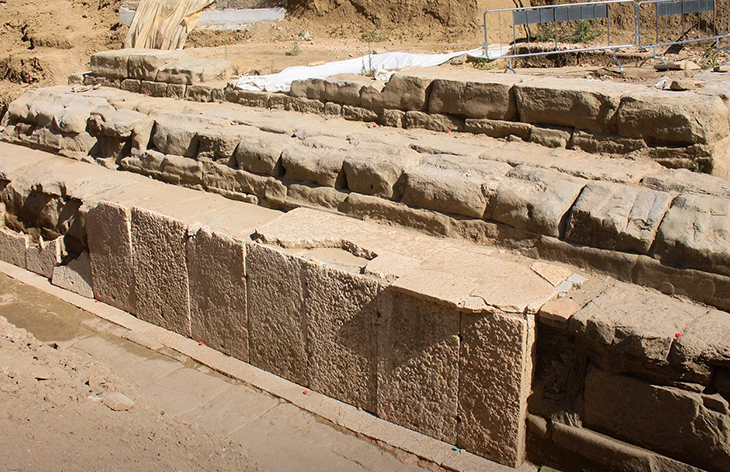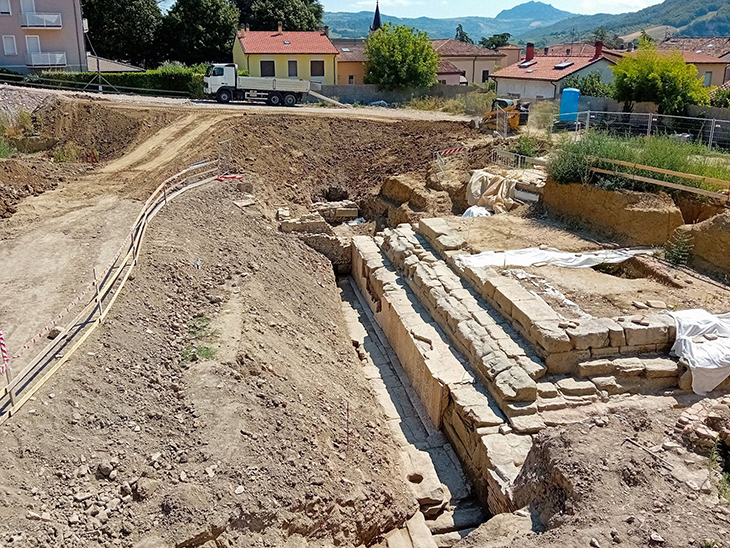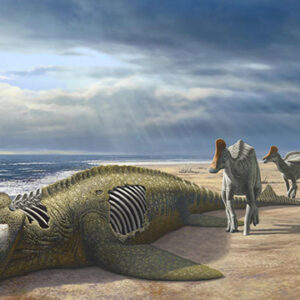
While unquestionably quaint and surrounded by stunning scenery, Sarsina in Italy’s Emilia Romagna region has never been known for attracting hordes of tourists.
In its earlier days, when it was part of Rome’s defensive perimeter, Sarsina served as a fortified outpost at a strategically important mountain pass and was also the birthplace of the famous Roman playwright Plautus.
However, little, if anything, of that heritage remains today. The quiet town, with its population of 3,000, was all set to welcome a new sports complex and supermarket when construction crews preparing to lay the foundation stumbled upon an “extremely rare” relic from Republican Rome. This discovery has brought a spotlight back to Sarsina for the first time in nearly 2,000 years.
The find is a pagan-Roman temple known as a Capitolium, dedicated to Jupiter, Minerva, and Juno. Roman researchers are incredibly excited about this discovery because the temple is exceptionally well-preserved and dates back to the last century BCE.
Spanning 6,200 square feet (or 577 square meters) in size, the temple’s foundation and podium are constructed from sandstone and limestone blocks that have maintained a state of preservation typical of Roman monumental architecture.
“We have unearthed three separate rooms, likely dedicated to the triad of gods Jupiter, Juno and Minerva,” Romina Pirraglia, lead archaeologist at the excavation site, said when speaking to CNN.

“The excavations are still underway… and we have already identified an older, deeper layer of ruins dating back to the 4th century BC, when the Umbrian people (an ancient Italic tribe who predated the Romans) lived in the area. The entire temple could be even larger than what we now see.”
Federica Gonzato, the superintendent overseeing fine arts, archaeology, and landscapes in the eastern Emilia Romagna provinces of Ravenna, Rimini, and Forlì-Cesena, characterized the temple as “exceptionally uncommon.” She affirmed that while there is unquestionably room for commercial and leisure activities, adjustments to the current plans are imperative to safeguard this magnificent monument.
“The marvelous quality of the stones has been spared from sacks, enemy invasions, and plunders across millennia thanks to the remote location of Sarsina, a quiet spot distant from larger cities,” Gonzato shared with CNN. “Temples such as this one (were) regularly plundered, exploited as quarries with stones and marble slabs taken away to be re-used to build new homes.”
Gonzato highlighted the continuous unveiling of new ancient structures and valuable artifacts as one of the factors that contribute to Italy’s unique allure. In the neighboring city of Ravenna, the Umbri were assimilated as loyal Italian tribal allies of the Roman Republic back in 89 BCE. It was from Ravenna that Julius Caesar assembled his troops and made the historic crossing of the Rubicon creek en route to establishing his Roman dictatorship.
Furthermore, Ravenna served as the capital of the Western Roman Empire following the sack of Rome itself. It is highly probable that a plethora of hidden secrets remains buried beneath the soil in this region.
What are your thoughts? Please comment below and share this news!
True Activist / Report a typo


